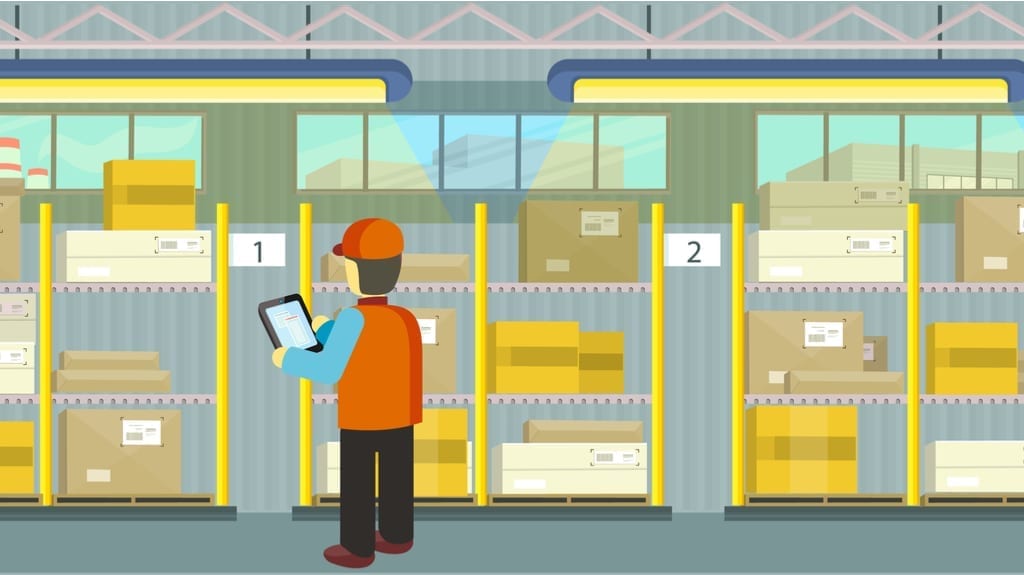The eCommerce business mostly manages the sale of finished products/ items. These items sit as inventory until they are sold. Hence they fall under the category of an organization’s resources. Inventory is generally perhaps the greatest resource for an organization, making it progressively essential to oversee cautiously as there are substantial monetary repercussions if something turns out badly.
Contingent upon the eCommerce business, some inventory goods might have a restricted timeframe of realistic usability. They could be short-lived food items, occasional things, or occasion-related goods. If there is a restricted measure of the timeframe of practical usability on specific items, eCommerce organizations should be ready to move inventory proficiently.
What is inventory Planning?
Inventory planning alludes to the cycle that any association takes on to decide the ideal quantity and timing. The only point is to adjust such plans with the association’s ability to create and make sales. Inventory planning typically influences the organization in various manners.
For instance, it straightforwardly decides the income of any association and its net revenues concerning those that have an over-dependence on quick turnovers of materials and products. Inventory planning is a significant part of any business’ prosperity.
Challenges faced in inventory planning
Inventory planning includes uniting heaps of various components and factors. Planning inventory precisely can be tested in any event, even for businesses working on one sales channel.
When a business or association depends on various channels, with different warehouses and perhaps even numerous 3PL suppliers, things get even more complicated, particularly when demand and irregularity are added to the plate.
Managing such countless separate tasks and factors without a moment’s delay represents some exceptional difficulties. Indeed, even minor hiccups can spell debacle. Normal difficulties include:
1) Disparate data
Viable inventory planning requires a ton of data from a lot of spots. Also, uniting this data is a difficult task. Inventory organizers should examine recorded data and retail reports that might be scattered across a wide range of legacy systems.
Organizers should examine sales orders, accounting, satisfaction, providers, and point-of-sale (POS) data.
This isn’t just tedious at the same time; whenever done inadequately, it may bring about one-sided request estimation prompting over-loading, under-loading, or missed opportunities.
2) Multiple locations
Allotting inventory that is put away across numerous locations is difficult. Without an appropriate inventory tracking system, it’s hard to know precisely where to assign your product constantly.
Besides, putting away products in unacceptable spots could bring additional transporting expenses and extended wait time for client request satisfaction. A poor picking process won’t just diminish usefulness; however, it increases the whole supply chain.

3) Human part
Technology isn’t the entire arrangement. An inventory organizer, at last, constrains inventory planning. When another person takes over the job, there is a ton of verifiable information that should be communicated to the new individual in control.
The new organizer will first come up short on the brand consciousness of the active organizer and may battle to comprehend the verifiable thinking behind the current inventory management system.
Furthermore, the human part doesn’t simply apply to ranking staff. Indeed, even with the best inventory programming close behind, your business will not see the ideal outcomes if staff aren’t adequately prepared to utilize it.
Poor planning impacts management and breeds miscalculations. Moreover, poor communication between acquisition, creation, and quality control offices will eventually obstruct productivity.
Why is inventory planning essential for E-commerce?
Inventory planning is the mainstay of practical eCommerce. That is because a business without a strong inventory plan is altogether more helpless against overselling, understocking, and deferred request satisfaction. By the day’s end, this all comes smashing down on client experience.
Now that we have understood what is inventory planning, let us look at some reasons why is inventory planning is essential for e-commerce.
Reason 1: Storage Cost
Have you ever known about the Pareto Principle? It’s one of those details they like to use a lot, and when applied to business, it states 80% of your deals will come from 20% of your products. Planning for this implies your stock management framework can’t simply store equivalent measures of each item.
It likewise implies your capacity details can assist you with sorting out which items are in the 80% classification (which means don’t stock a more incredible amount of them and consider eliminating them over the long period) and which are in the 20% class (the ones you need to consistently stock and store, so they are prepared). It’s similar to playing poker — hold tight to the great cards, throw the awful ones.
Reason 2: Sales Forecasts
As an online business startup, we’re confident you know that an online inventory management system is one of the most straightforward approaches to monitor a lot of data. There are some genuinely extraordinary estimating programming choices to help. Nonetheless, just 15% of private companies are using them.
However, some way or another, 46% of businesses check the number of gadgets they sold in the most recent couple of months and go from that point. So why use a ‘wizardry 8-ball’ strategy when you could be using prescient programming that doesn’t have the foggiest idea of how to lose? And the entirety of this implies having a more accurate warehouse inventory, which means setting aside your cash.

Reason 3: Returned Inventory
You realize returns are a piece of deals, and now and then, they can be the most troubling aspect. So why not make it simpler for your business by consolidating returns into your warehouse inventory management.
One of the approaches to get some help with this is from coordinations organizations that give e-satisfaction benefits that make pick and pack, just as returns and taking care of, exact and practical. 92% of online customers will purchase from a business again in case returns are made simple.
Reason 4: Theft and Fraud Management
No business likes misfortunes, mainly when it’s from burglary or misrepresentation. Having a standardized identification inventory framework can assist with forestalling these sorts of circumstances by following stock levels and areas notwithstanding the staff taking care of the items. Just permit representatives you trust to approach the stock control framework, and by showing all the others you monitor well, everything, they will know not to take any risks.
Reason 5: Customer Experience
Without positive client encounters, your business will not succeed. Simply a 5% increment in client maintenance can support your benefits by up to 95%, and having a legitimate inventory management framework can assist with guaranteeing more noteworthy fulfilment and customer reliability. Clients know what they need and when and where they need it. Assuming you need to keep them glad, you have to be locked and stacked regarding monitoring your stock.
Key Considerations when it comes to Inventory Planning
Considering that legitimate inventory planning is so business-basic – presently, like never before, how can we deal with a guarantee that our inventory plans are hearty and all set?
To realize and do a fruitful inventory plan, you’ll need to follow accepted procedures and strategies. To do this, eCommerce businesses must get to know the significant advances involved in planning inventory.
Significant advances involved –
There are numerous significant advances involved in planning and executing an effective inventory plan. These jobs can be considered in three sections: setting, examination, the planning.
Setting alludes to your business’ data history, from small subtleties to full-scale level planning. Everything from deals orders and client information to the contender scene and current socio-political occasions should inform your inventory planning.
Examination alludes to inferring the actual data and ensuring that the inventory plan depends on the correct, adequate, and (critical) complete data. What does this data mean, and how might it inform a flexible, versatile inventory plan?
Finally, the planning stage is fundamental in and of itself.

The planning stage involves:
- Gathering an extensive database of authentic deals data
- Understanding how stock-keeping units (SKUs) have performed
- Using SKU execution to set assumptions for upcoming seasons
- Analyzing the opposition’s data (pricing, advancements, and patterns)
- Developing speculative or severe receipt spending plans by item class
- Week after week, execution recaps to survey item and class execution
- Developing markdowns and advancements dependent on week after week execution recaps
- Reforecasting occasionally reliant on a week by week updates, patterns, and recent developments
- Managing evergreen inventory with month to month deals conjectures and receipt projections
Post-season hindsight of financial and item execution to determine if targets were met and roll out fundamental improvements to next season’s system.
Setting up prescribed procedures and methodology
Another critical thought with regards to inventory planning is maintaining best practices and strategies consistently. Getting inventory planning right is a harmony between human mastery (individuals), intelligent strategizing (measure), and the exemplary apparatuses for the work (innovation).
Inquiries of Inventory Planning
When starting to foster an inventory plan, it’s an intelligent thought to pose some simple inquiries that will inform your methodology going ahead.
1. What is your item volume prone to be?
To respond to this, commit some time investigating your recorded data to comprehend the irregularity, coupling with patterns data from instruments like your own inventory planning programming or Google Trends. Do this before scheduling any orders.
You’ll have the option to work out your standard off-top deals stock prerequisites just as factoring in any expected interest spikes. By determining your monetary request amount, you’ll distinguish the ideal amount of stock to hold at one time and minimize all out ordering and having costs accordingly.
2. What may affect my inventory?
Expect any internal or outside factors that may affect shopper interest later on. Consider upcoming advertising efforts, deals advancements, target market, occasional interest spikes, and current customer patterns.
3. Am I prioritizing productivity?
Productivity is the soul of inventory planning. Inquire as to whether your stockroom and request measure is streamlined for ideal execution. If not, how would you be able to deal with ensuring that it is?
Think extra efficient rooms for simple picking and recovery, adequate space for additional stock (yet more minor than you’re haemorrhaging cash), ideal distribution centre areas for quicker conveyance satisfaction, and streamlined correspondences among inventory and request management groups.
4. Am I using the right KPIs?
Consider whether you’ve been using measurements and key execution indicators (KPIs) for your full potential benefit. These essential datasets assist associations with gauging the achievement of their inventory planning to date. Ensure that your inventory plan considers the following components and factors – and use KPIs to inform your future procedure.
- Orders delayed by stockouts.
- Capacity limit utilization
- Gauge precision
- Framework exactness
- Day by day deals
- Development of inventory
- Consumer loyalty
- Inventory turnover
- Carrying cost of deals
Models of Inventory Planning
Inventory planning frameworks will not appear to be identical for each business. Accordingly, there are different distinctive inventory planning models. Indeed, there are three main models.
The models address the issues of various kinds of organizations. Principally those dealing in:
- Crude materials
- To some degree, finished products
- Finished products
- The deterministic inventory model
The deterministic inventory model is most ordinarily utilized by traders dealing with crude materials. The deterministic model uses a prudent strategy to stay away from stockouts. One model is the Economic Order Quantity (EOQ) model.
The EOQ model can compute an ideal request amount to diminish inventory costs and augment esteem. This is a powerful model insofar as request generally stays consistent. In any case, it doesn’t represent an occasional change or extreme variances. The deterministic model, therefore, requires constant monitoring to be fruitful.
The work in progress model (WIP)
This model is most appropriate to shippers dealing in, to some extent, finished merchandise, finished products, or merchandise on the way (GIT). This inventory model spotlights the holding of inventory, and there are three thought processes in doing so.
The transaction rationale sets that buying crude materials in mass is less expensive and brings down the per-unit cost. The prudent cause utilizes inventory as assurance against request uncertainties to forestall stockouts. The speculative model elevates holding stock to moderate increases in the price of materials and additional work.
The perpetual inventory model
The perpetual (or continuous) inventory model is likewise frequently utilized by organizations dealing with halfway or finished merchandise. Continuous frameworks continually track amounts, and renewal orders are made when stock scopes under a set cutoff point (reorder).
This is the primary framework that can’t be maintained physically. The perpetual model depends on a specific innovation. Yet, this model permits vendors to monitor current stock levels and keep away from stockouts.

The just in time (JIT) inventory model
The just in time (or JIT) inventory model works by straightforwardly aligning requests of crude materials or things from providers with creation plans. In other words, the organization will hold adequate inventory to cover the most significant market interest.
The thought is to increase productivity and reduce waste by ordering and receiving merchandise when required and never in excess. To make progress with this model, retailers should try to conjecture interest as precisely as expected.
Improving Inventory Planning with Technology
Inventory planning can be improved, supported, and upgraded with the right innovation. ERP inventory control frameworks offer clients adaptable authority over different pieces of the product lifecycle. From creation in the processing plant to capacity in the stockroom and travel. Notwithstanding, implementing an ERP framework is frequently a perplexing venture that can require up to years, and as a rule, requires modified eCommerce integrations at additional expense. So it may not be the ideal alternative for eCommerce businesses that hope to increase.
However, private ventures may be outstanding using Excel to deal with their inventory, can undoubtedly get overpowered by increasing request volumes and item SKUs when their businesses begin to develop.
Fortunately, many inventory planning programming alternatives are available today that can be scaled for various business needs. Indeed, a significant number of these product organizations offer completely flexible undertaking level programming arrangements, things like:
- Area management
- Deals tracking
- Standardized identification and POS capacity
- Hindrances to oversell
- Multichannel management
- Data-driven interest forecasting
- Satisfaction planning
- Inventory, deals channel, provider, and client reporting.
Retail business intelligence
Mobilizing innovation and continuous data insights will remain key to managing client assumptions in the years to come, coping with request variances, and surviving any future inventory network disturbances. Digitizing our stock chains will help us future-verify our eCommerce stages by speeding up business-basic cycles and eliminating time-consuming manual errands and dynamics.
How does ZapInventory help in inventory planning?
At ZapApp, we are always motivated to offer you the best in the market. The ZapInventory Version 2.0 is all set to mark a spectacular impression with a powerful feature set & a carefully designed UI that embraces elegance. These are some areas Zapinventory can be helpful to you-
- Supply chain management
- Warehouse management
- Multichannel inventory
To know more, schedule a call with us by clicking here.
 Start using ZapInventory today
Start using ZapInventory today
